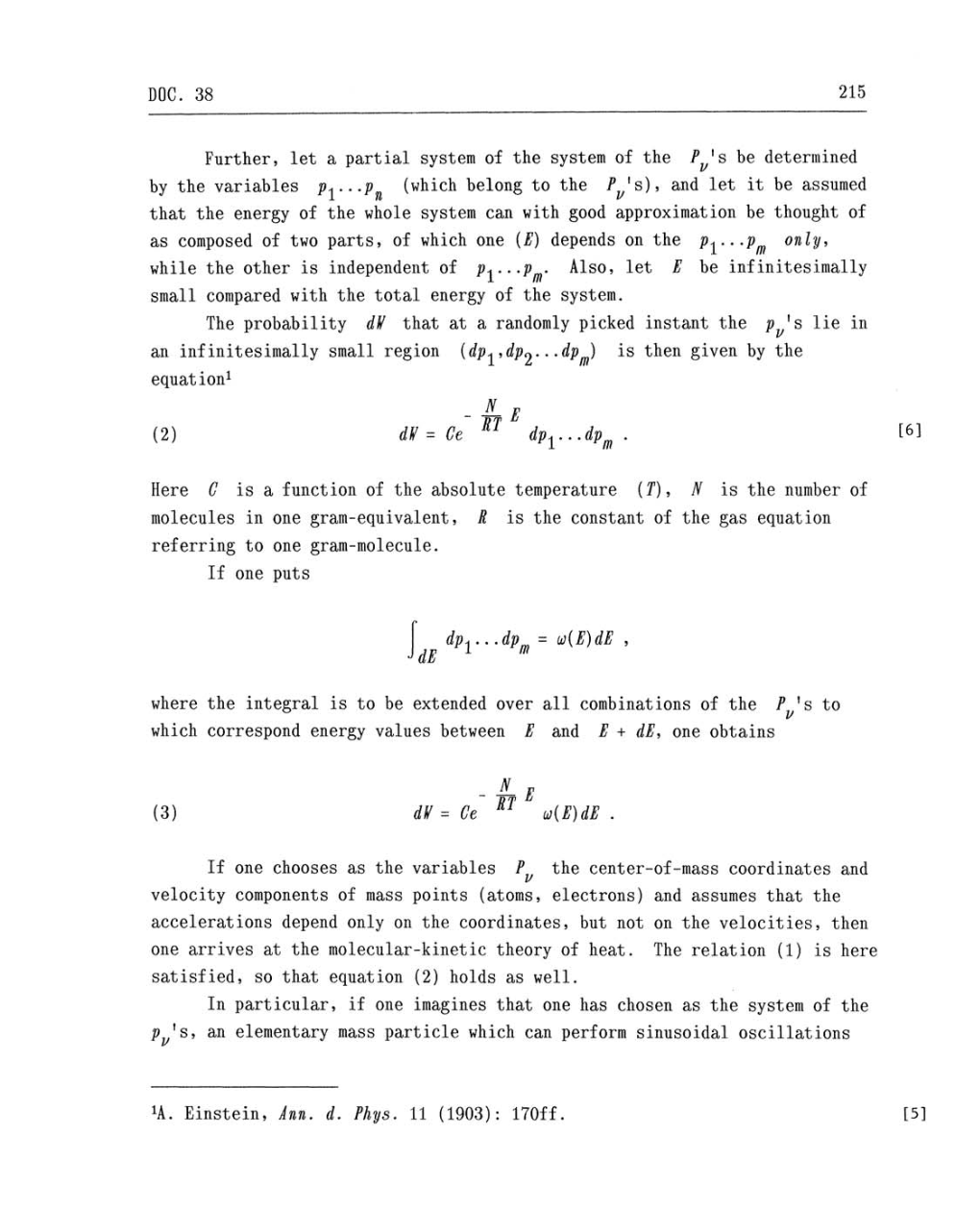DOC.
38
215
Further, let
a
partial
system
of
the
system
of
the
Pv's
be
determined
by
the variables
P1...Pn
(which
belong to
the
pv's),
and
let it
be assumed
that the
energy
of the whole
system can
with
good
approximation
be
thought
of
as
composed
of
two
parts, of which
one (E)
depends on
the
P1...Pm
only,
while the
other
is
independent
of
P1...Pm.
Also,
let
E
be infinitesimally
small
compared
with the total
energy
of
the
system.
The
probability
dW
that
at
a
randomly
picked
instant the
pv's
lie in
an
infinitesimally small
region
(dp1,dp2...dPm)
is
then
given
by
the
equation1
N
~
Wr
LF
(2) dV
=
Ce
ni
dpv..dpm.
[6]
Here
C
is
a
function
of
the absolute
temperature (T),
N
is the
number
of
molecules in
one
gram-equivalent,
R
is the
constant
of the
gas
equation
referring
to
one
gram-molecule.
If
one
puts
dp1...dpm
=
w(E)dE,
dE
1 m
where
the
integral
is
to be
extended
over
all combinations
of
the
Pv's
to
which
correspond
energy
values
between
E
and
E
+
dE,
one
obtains
-
E
(3)
dW
=
Ce
RT
w(E)dE.
If
one
chooses
as
the variables
Pv
the center-of-mass coordinates
and
velocity
components
of
mass
points
(atoms,
electrons)
and
assumes
that the
accelerations
depend only
on
the
coordinates,
but
not
on
the velocities, then
one
arrives
at
the molecular-kinetic
theory
of
heat.
The
relation
(1)
is
here
satisfied,
so
that
equation
(2)
holds
as
well.
In particular, if
one
imagines
that
one
has
chosen
as
the
system
of
the
pv's,
an
elementary
mass
particle
which
can
perform
sinusoidal oscillations
1A.
Einstein,
Ann.
d.
Phys. 11
(1903):
170ff.
[5]
